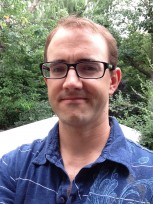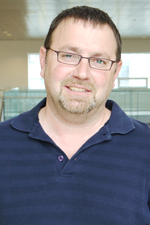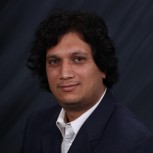Dr. Jousse Lecture Series
Welcome to the new Dr. Albin T Jousse Lecture Series in collaboration with Best Practice Forum, which is sponsored by the Rehabilitation Engineering Laboratory, the Spinal Cord Rehab Program, the Activity Team, and Toronto Rehab.
The purpose of this lecture series is to provide a venue for scientists, physicians and clinicians working in rehab settings as well as students, consumers and their caregivers to share knowledge, present the latest research findings and participate in a dialogue on what it means to live with disability. The timetable for the lectures along with the presenters is given below. All lectures are presented at the Lyndhurst Centre, from 12 p.m. to 1 p.m. The lectures will be 45 minute long followed by 15 minutes of questions.
Coordinators of the Dr. Albin T. Jousse Lecture Series are Takashi Yoshida and José Zariffa. If you have any comments, concerns or would like to present please send us an email to jose.zariffa (at) utoronto.ca
Season 9 (2015-2016)
Upcoming Lectures

Luc Tremblay
Biography:
Dr. Tremblay completed his M.Sc. degrees at Université de Montréal in the area of motor learning and his Ph.D. at McMaster University in the area of motor control. After, he completed a very brief post-doc at McMaster and secured his first faculty position at the University of Houston. Since 2003, he has led the perceptual-motor behaviour laboratory at the University of Toronto and got recently appointed as Associate Dean, Research of his faculty. He has been funded by NSERC since 2004 and secured other key awards such as one from the Canada Foundation for Innovation, relevant for his work on real-time movement-dependent sensory manipulation methods. He has published over 40 peer-reviewed articles and 3 book chapters. Of course, being a proud father of two represents a much more impressive achievement.
Title: The need for speed in upper-limb reaching
Abstract: Performing voluntary movements normally requires integrating multiple sensory inputs and such integration has been argued to be statistically optimal. However, the weighing of sensory inputs may not be consistently optimal when performing voluntary reaches. More importantly, the weighing of the different sensory modalities seems to change as a function of real-time limb speed/velocity. Also, it appears that the central nervous system pre-selects speed/velocity ranges for implementing different online sensorimotor processes. Further, providing physical guidance during upper-limb reaches can alter these online control processes. These lines of research led to the proposal that multisensory integration takes places in the speed/velocity domain. Such a proposal also supported by other neurophysiological and empirical data. Finally, this importance of speed/velocity for multisensory integration could represent a useful framework when designing physical training and rehabilitation programs.
Date & Time: September 17, 2015
[/mp_text] [/mp_span_inner] [/mp_row_inner]

Biography:
Avril Mansfield received a BSc in Sport and Exercise Science and MSc in Biomedical Engineering from the University of Limerick, before completing a PhD in the Institute of Medical Science at the University of Toronto in 2007. She is a Registered Kinesiologist and is currently appointed as a Scientist with the Mobility Team at the Toronto Rehabilitation Institute, Affiliate Scientist with the Brain Sciences Program, Sunnybrook Research Institute, and Assistant Professor (status only) in the Department of Physical Therapy, University of Toronto. Her research aims to determine how aging and neurologic injury or disease affect balance control and mobility, and to develop interventions that improve balance and the capacity for safe independent mobility.
Abstract:
Independent mobility is the number one determinant of quality of life. As people age or after they suffer a neurologic injury (like stroke), a number of physiological changes can limit the person’s capacity to move about their environments safely. Often, increased risk for falls or fear of falling lead to people restricting their own mobility. This presentation will discuss 1) some of the ways that aging and neurologic injury affect mobility and increase the risk for falls, 2) behavioural interventions to encourage increased mobility, and 3) novel ‘perturbation training’ to improve balance control and reduce fall risk.
Date: Thursday, October 15, 2015

Avril Mansfield
Biography:
Avril Mansfield received a BSc in Sport and Exercise Science and MSc in Biomedical Engineering from the University of Limerick, before completing a PhD in the Institute of Medical Science at the University of Toronto in 2007. She is a Registered Kinesiologist and is currently appointed as a Scientist with the Mobility Team at the Toronto Rehabilitation Institute, Affiliate Scientist with the Brain Sciences Program, Sunnybrook Research Institute, and Assistant Professor (status only) in the Department of Physical Therapy, University of Toronto. Her research aims to determine how aging and neurologic injury or disease affect balance control and mobility, and to develop interventions that improve balance and the capacity for safe independent mobility.
Abstract:
Independent mobility is the number one determinant of quality of life. As people age or after they suffer a neurologic injury (like stroke), a number of physiological changes can limit the person’s capacity to move about their environments safely. Often, increased risk for falls or fear of falling lead to people restricting their own mobility. This presentation will discuss 1) some of the ways that aging and neurologic injury affect mobility and increase the risk for falls, 2) behavioural interventions to encourage increased mobility, and 3) novel ‘perturbation training’ to improve balance control and reduce fall risk.
Date: Thursday, October 15, 2015

Ann Heesters
Biography:
Ann Heesters is the Associate Director of Bioethics at Toronto’s University Health Network, Chair of the UHN Rehabilitation Science and Medicine Research Ethics Board, and is a Bioethicist with the University of Toronto’s Joint Centre for Bioethics. Ann has been practicing in the field for approximately fifteen years and was the Director of Ethics at The Ottawa Hospital before coming to Toronto in 2009.
She has an abiding interest in the evolving standards of practice for health care ethicists and, with her colleagues at the American Society of Bioethics and Humanities, helped to author a code of ethics for ethicists. She was also a founding member of PHEEP (Practicing Healthcare Ethicists Exploring Professionalization) and of the newly established non-profit Board called CAPHE (the Canadian Association of Practicing Healthcare Ethicists).
A former reservist with the Canadian Infantry, Ann periodically reviews research proposals (related to the rehabilitation of veterans and active duty service members) for the United States Department of Defense.
Title: Making Lists And Checking Them Twice. Can We Reliably Distinguish Research From Clinical Care? Does It Matter Anymore?
Abstract:
Most large hospitals now aspire to be “learning health care systems” where we all strive to innovate and to improve our practice daily basis. The responsibility to generate knowledge that can improve patient care is often described as a moral one; and one that is shared by patients, clinical teams and researchers alike. In this talk I will describe some of the challenges and opportunities presented by this new approach to knowledge generation.
Date: November 19, 2015

Abstract:
Part 1: Powerful spinal cord MRI techniques have emerged that can provide quantitative measures of tissue injury and regeneration. Diffusion tensor imaging (DTI) measures directional water diffusitivity and reflects the integrity of nerve fibres (axons). Magnetization transfer (MT) gives a measure of the quantity of myelin (the insulation around nerves). T2*-weighted imaging provides high resolution images that show grey and white matter atrophy in each compartment of the spinal cord, and the contrast reflects the health of the tissue. These techniques have the potential to measure specific aspects of tissue injury, which may be useful to patients with traumatic spinal cord injury (SCI) to accurately predict functional recovery. This may also serve as a biomarker providing a short-term clinical endpoint for clinical trials by measuring aspects of tissue regeneration such as axonal sprouting and re-myelination. Results of a clinical study in degenerative cervical myelopathy are highly encouraging, and a clinical study in traumatic SCI is underway.
Part 2: Deep brain stimulation (DBS) is a surgical procedure used in many areas of the brain that has helped numerous patients with various pathologies, including Parkinson Disease (PD), Essential Tremor, Dystonia, Obsessive Compulsive Disorder, Depression, and Chronic Pain. DBS of the pedunculopontine nucleus (PPN), which is a small nucleus of neurons in the midbrain that controls walking, has been successfully used in PD to improve walking. Recent research has shown that DBS of this region dramatically improves walking in rats with incomplete SCI. Our research group has recently initiated a new study that is currently recruiting patients to investigate if DBS of the PPN can improve walking in patients with motor-incomplete SCI, who cannot currently walk safely and effectively on a daily basis.
Date: Thursday, December 17, 2015

William Gage
Biography
Dr. William Gage is the Associate Vice President Teaching and Learning at York University. He is an Associate Professor in the School of Kinesiology and Health Science, and Director of the Orthopaedic Neuromechanics Laboratory. William previously served as Associate Dean of Research and Innovation in the Faculty of Health, and briefly as Acting Associate Vice President Research and Innovation. He served as Founding Director of the York University Centre for Aging Research and Education (YU-CARE) until taking on his current role in the Provost’s Office. William is particularly interested in how balance and walking are affected by age, by joint disease (arthritis), and by stroke. His graduate students are engaged in their investigations of: differences in balance and gait between younger and older patients with knee osteoarthritis before and after joint replacement surgery; new, emerging measures of the control of walking, non-linear metrics of variability in walking performance; the use of wearable, wireless sensors for obtaining laboratory-quality measurements of balance and walking while people are active in the community, outside of the lab; and how exercises might effect changes in bone and cartilage metabolism, as indicated by changes in biomarkers in the blood. Dr. Gage is also an active writer. He shares his knowledge related to falls, falls risk, and falls prevention for older adults through his online writing, at www.dontfall.ca.
Abstract:
The focus of this discussion will be on differences in balance recovery responses that are observed between two different, established postural perturbation methods: translating platform, and upper-body pull. The history of balance recovery research is (at least) decades long; however, there is little consensus regarding how humans step to recover balance following a disturbance, perhaps due to the many different postural perturbation methods found in the literature. While tremendous progress has been made in recent years, lack of clarity about how balance is recovered has limited the utility of clinical balance testing, and balance training as a rehabilitation tool. The current work in my laboratory, led by doctoral candidate Dmitry Verniba, utilizes two different methods to disrupt balance control and elicit a stepping response. Distinct kinematic differences amongst participants, between methods, have been demonstrated. Importantly, by varying force and distance parameters, a seemingly characteristic curve has been shown, describing a relationship to stepping threshold.
Date: Thursday January 21st, 2016

Chetan Phadke
Biography:
Dr. Chetan Phadke was trained as a physiotherapist in India and received his PhD in rehabilitation science from University of Florida. Dr. Phadke has several years of experience working in the area of neurorehabilitation in persons with SCI, stroke, MS, and cerebral palsy. He has published over 40 peer-reviewed papers in leading journals and is currently a scientist in the Spasticity Research Program at the West Park Healthcare Centre and holds faculty positions in the Department of Physical Therapy, University of Toronto and the Faculty of Health, York University, in Toronto, Canada. Dr. Phadke’s current interest is in developing a better understanding around the functional impact of spasticity and the application of new gait training methods to persons with spasticity.
Abstract
In this lecture, we will discuss findings of a recent study in which we compared the walking phase- and task-dependent H-reflex modulation in two conditions – standing and walking in 2 groups of subjects with motor incomplete spinal cord injury who habitually walked with or without a walker. H-reflex was greater in the walker group during stance phase (but not standing or swing phases). These differences in H-reflex modulation between groups walking with and without a walker can be explained by sensory mechanism which enhances central excitation, difference in motor activation levels between groups, and other complex mechanism that influences balance or stability.

Mohammad Alavinia
Biography:
Dr. Mohammad Alavinia joined the Neural Engineering and Therapeutics Team on October 2014, first as a scientific associate and then as a postdoctoral fellow working with Dr. Craven. He graduated from Tehran medical school as a general physician and subsequently completed PhD training in Clinical Epidemiology and graduated from Erasmus-MC University in the Netherlands, where he studied workers’ health through application of the Work Ability Index (WAI). After graduation, he studied communicable and non-communicable diseases and development of health indicators of Type II diabetes mellitus at the Center for Non-communicable Diseases Control for the Ministry of Health in Iran. During his fellowship at Lyndhurst Centre, he will participate in the design, implementation, and evaluation of care indicators for SCI rehabilitation locally and nationally (the SCI-HIGH project) as well as contribute to quality improvement activities related to minimizing urinary tract infections.
Title: Quality Methods to Describe UTI Frequency and Identify Process Improvement Opportunities
Abstract
Background: Urinary Tract Infections (UTI) are the most common health complication, while urinary sepsis is a frequent cause of service interruptions or transfer to acute care during inpatient Spinal Cord Injury (SCI) rehabilitation. In this quality-improvement (QI) process, we aimed to reduce the incidence and severity of UTI among patients admitted for tertiary SCI rehabilitation.
Methods: We assembled a QI team including physicians, nurses and members of the quality improvement office, defined goals for the quality process, and used a Fishbone (Ishikawa) diagram to map out possible causes of quality care problems for UTI among SCI individuals. Data regarding UTI symptom and diagnosis frequency were prospectively collected from 3 units for 5 months (August to December 2015). Prescribing physicians completed a sign and symptoms checklist after each written urine culture and sensitivity (C&S) order.
Quality Control Analysis of the data with the relevant chart (Pareto Chart) was used to visualize the main focus for our process. A control chart with a mean of 3 UTI/unit was used to evaluate the UTI prevention strategies. In the third month of the QI process and data gathering a hand washing monitoring system was launched in the rehabilitation centre. All data analyses were done using SPSS version 21 and R-3.2.3 package qcc.
Results: During the study period among 118 admissions, 55 adults with SCI (C1-T12, AIS A-D) had urine sent for C&S based on sign and symptoms, among them 32 (58%) were subsequently diagnosed with a UTI. Most UTIs (81.30 %) occurred in patients with Intermittent Catheterizations (IC); among them 46% was nurse-administered IC.
Conclusions: Subsequent QI strategies will address nursing best practices, including teaching with patients and families, establishment of IC best practices; implementation of hand washing monitoring system, UTI reporting among staff during daily huddles and continued practice audits and tracking UTI incidence.
Thursday, March 17th, 2016

Name
Biography:
Title:
Abstract
Date:
Season 8 (2014-2015)
- Austin J. Bergquist: The peculiar pattern of motor unit recruitment during electrical stimulation… and what’s being done about it
- Mark Bayley: Management of SCI patients with concomitant injury to the upper end of the spinal cord (the brain)
- Kelly Arbour-Nicitopoulos: Moving into the community: promoting physical activity among persons with spinal cord injury
- Stephen Perry: The neuromechanics of foot and footwear
- Tilak Dutta: Developing better tools to support successful aging at home
- Charles H. Tator: Pathophysiology and neuroprotective strategies for acute spinal cord injury: experimental and clinical trials
- Nicole Mittmann: Economic and spinal injury
- Chelsea Pelletier: Cardiorespiratory fitness assessment and exercise prescription guidelines for adults with spinal cord injury
Season 7 (2013-2014)
- Neural Engineering and Therapeutics (NET) Team Showcase, Part 1
- Graham Jones: A load of BS… (that’s breath stacking)
- Kristen Davidge: Nerve transfer surgery to improve hand function in spinal cord injury: from conceptualization to outcome
- Kristin Musselman: Training walking after incomplete spinal cord injury: recent advances and next steps
- Jennifer Campos: Toronto Rehab’s iDAPT Centre for Rehabilitation Research: using multisensory simulation technologies to study real world mobility challenges
- George Mochizuki: ‘Catching’ up with post-stroke spasticity: new perspectives on an old issue
- Neural Engineering and Therapeutics (NET) Team Showcase, Part 2
- Audrey Hicks: Body-weight supported ambulation: a comparison between methods
- Sunita Mathur: Skeletal muscle dysfunction in acute and chronic respiratory disease
Season 6 (2012-2013)
- Hossein Rouhani: Wearable technologies for daily activity monitoring: application for clinical evaluations
- Sujay Galen: Functional and neurophysiological outcome measures to assess recovery in spinal cord injury
- David Ditor: A novel neuroprotective strategy for SCI: pilot data regarding the use of Angiotensin II receptor blockade
- Sylvie Nadeau: Can we assume that persons with incomplete spinal cord injury have a symmetrical gait pattern?
- Cindi Morshead: Neural precursor based strategies to promote self-repair of the injured brain
- Paul Yoo: Neuromodulation of the urinary bladder by minimally-invasive electrical nerve stimulation
- Linda Rapson: Acupuncture: safe, effective treatment for pain and dysfunction
- Taufik Valiante: Tracking information flow high gamma coherence in the human brain
- Babak Taati: Computer vision technologies for continuous and unobtrusive health monitoring
Season 5 (2011-2012)
- Jose Zariffa: Upper limb rehabilitation robotics in sub-acute spinal cord injury
- Hubert deBruin: Protecting muscle following denervation
- Jan Andrysek: Developments in mobility assistive technologies and therapies in prosthetics and orthotics
- Cesar Marquez-Chin: Brain-machine interfacing at Toronto Rehab
- Magdy Hassouna: Bladder and sexual functions in patients with spinal cord injury
- Catherine Craven: Sublesional osteoporosis: are we a bone health “Best Practice” organization?
- Michael H. Ford: Spine surgery: before, during and after
Season 4 (2010-2011)
- Kristiina McConville: Virtual reality games for standing and seated balance
- Keith Hayes: Stem cell therapies for people for SCI: ready for prime time?
- Mary K. Nagai: Looking through a microscope at spinal cord injury
- Dimitry Sayenko: Rehabilitation of motor function: from space to games
- Lora Giangregorio: Exercise prescription for osteoporosis: practical evidence-based tips for clinicians
- Santa Concepcion Huerta-Olivares: New generation of programmable neuroprostheses: switched mode power supply functional electrical stimulator
- Ethne Nussbaum: An evidence-based approach to treating chronic wounds using electrophysiological agents: a bench to bedside program of research
Season 3 (2009-2010)
- Ariel Tankus: Encoding of speed and direction of movement in the human supplementary area
- Milos R. Popovic: FES therapy for improving grasping in individuals after SCI and brain-machine interfaces
- Pamela Houghton: Electrical stimulation therapy for the treatment of pressure sores in people with SCI
- Heather Carnahan: Simulation for optimizing the education of physical and occupational therapists: is there a role?
- Masae Miyatani: Arterial stiffness as a predictor of heart disease: impact of exercises on arterial stiffness
- Alex Mihailidis: Technology applications to assist persons with dementia
- Cheryl Bradbury: The impact of a brief cognitive behaviour therapy intervention aimed at improving emotional well-being and quality of life for individuals with SCI
- Sander Hitzig: Long-term health after SCI: are people with SCI prematurely aging?
Season 2 (2008-2009)
- Dimitry Sayenko: Microgravity: facts and insight of application in neuro-rehabilitation
- Lee R. Kirby & Cher Smith: Wheelchair skills training: translating research evidence into clinical practice
- Catriona M. Steele: Treatment outcomes following a rigorous tongue pressure exercise protocol in acquired neurogenic dysphagia
- Julio C. Furlan: Geriatric patients with traumatic SCI: to care or not to care?
- Molly Verrier: Wheeling/walking outcomes outcomes in individuals with SCI: how our data informs rehabilitation practice
- Danny Gagnon: Sitting pivot transfer in individuals with SCI: from laboratory assessment to clinical practice
Season 1 (2007-2008)
- Milos R. Popovic: Current state of research in the REL
- Catherine Craven: ASIA exam: a users guide for engineers
- Noritaka Kawashima: Neurophysiological basis of human bipedal locomotion
- Kei Masani: Control mechanisms of balance during quiet sitting
- Richard Preuss: Proprioception and postural control in the lumbar spine
- Michael McGillion: Chronic pain self-management: vital to the health of canadians
- Judi Hunter: Seeing is believing: mirrors, movement, motor control and neuropathic pain
- Anthony S. Burns: Prognosis following traumatic SCI